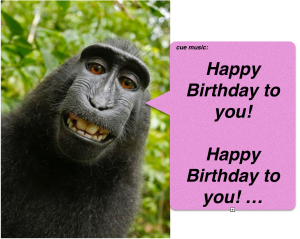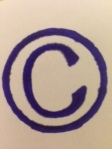Finding Vivian Maier, is a fascinating, documentary film about a talented street photographer who kept her photographs secret… and was recently discovered when a young entrepreneur purchased boxes of her negatives and undeveloped film on a hunch at auction. This situation raises an interesting copyright scenario; because, Vivian Maier took her photographs from the mid-1950’s-1990’s but they are only now being “published” and made available to the public for viewing, sale and distribution. The “publication” of a work is an element in copyright registration that can often seem mysterious for a first-time copyright registrant. Let’s take a look at the publication element in US copyright registration by using Vivian Maier’s newly discovered photographs as an example.
Here is background on Vivian Maier and her photographs: “Now considered one of the 20th century’s greatest street photographers, Vivian Maier spent her life as a nanny, secretly taking over 100,000 photographs. Hidden during her lifetime, Maier’s work was discovered by pure chance when amateur historian John Maloof ended up with a stash of her photo [negatives] at an auction. Fascinated, he searched for more—and for the story behind the woman. Now, this unsung art- its strange and riveting life and work are revealed through never-before-seen photographs, films and interviews with dozens who thought they knew her.” [the synopsis of the film, Finding Vivian Maier, as posted on the IFC website at http://www.ifccenter.com/films/finding-vivian-maier/] [the film gets 2 thumbs up].
What is copyright publication?
Publication has a technical meaning in copyright law. According to the statute, “Publication is the distribution of copies or phonorecords of a work to the public by sale or other transfer of ownership, or by rental, lease, or lending. The offering to distribute copies or phonorecords to a group of persons for purposes of further distribution, public performance, or public display constitutes publication. A public performance or display of a work does not of itself constitute publication.” Generally, publication occurs on the date on which copies of the work are first distributed to the public. [Quoted from the US Copyright Office website at http://www.copyright.gov/help/faq/faq-definitions.html]
Why is the publication date of a copyrighted work important? Because, the publication date of a work may impact the duration of copyright protection vested in a work. This is especially true for works, like many of Vivian Maier’s photographs, which were created before January 1, 1978 but only recently published. Here are details on how long copyright protection endures:
- Copyright Protection for Works Originally Created on or after January 1, 1978. A work that was created (fixed in tangible form for the first time) on or after January 1, 1978, is automatically protected from the moment of its creation and is ordinarily given a term enduring for the author’s life plus an additional 70 years after the author’s death. In the case of “a joint work prepared by two or more authors who did not work for hire,” the term lasts for 70 years after the last surviving author’s death. For works made for hire, and for anonymous and pseudonymous works (unless the author’s identity is revealed in Copyright Office records),the duration of copyright will be 95 years from publication or 120 years from creation, whichever is shorter. [Excerpt from US Copyright Office, Circular 1 at http://www.copyright.gov/circs/circ01.pdf]
- Copyright Protection for Works Originally Created Before January 1, 1978, But Not Published or Registered by That Date. These works have been automatically brought under the statute and are now given federal copyright protection. The duration of copyright in these works is generally computed in the same way as for works created on or after January 1, 1978: the lifeplus70 or 95/120year terms apply to them as well. (Many of Vivian Maier’s newly discovered and published works likely fall into this category). [Excerpt from US Copyright Office, Circular 1 at http://www.copyright.gov/circs/circ01.pdf]
- Copyright Protection for Works Originally Created and Published or Registered before January 1, 1978. There is quite a bit of variation in copyright terms vested in works created and published before January 1, 1978. The longest term of copyright protection for these works was for 95 years [See page 6 of US Copyright Office, Circular 1 at http://www.copyright.gov/circs/circ01.pdf]
For Vivian Maier’s newly discovered and published works, they will likely benefit from a longer term of copyright protection; since, they have recently been published some twenty to sixty years after they were taken.
BY: Vanessa Kaster, Esq., LL.M.
vk@kasterlegal.com
See also: Information about Vivian Maier at http://www.vivianmaier.com/about-vivian-maier/; the US Copyright Office website at http://www.copyright.gov/help/faq/faq-definitions.html; US Copyright Circular 1: Copyright Basics at http://www.copyright.gov/circs/circ01.pdf and http://www.copyright.gov/circs/circ01.pdf#page=3; show times for seeing Finding Vivian Maier at the IFC in NYC at http://www.ifccenter.com/films/finding-vivian-maier/; @iplegalfreebies and www.kasterlegal.com.



